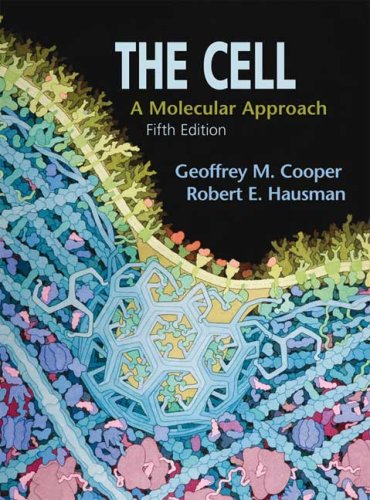The Cell: A Molecular Approach pdf free
Par asberry john le jeudi, mai 19 2016, 01:06 - Lien permanent
The Cell: A Molecular Approach. Geoffrey M. Cooper, Robert E. Hausman

The.Cell.A.Molecular.Approach.pdf
ISBN: 0878932194,9780878932191 | 848 pages | 22 Mb

The Cell: A Molecular Approach Geoffrey M. Cooper, Robert E. Hausman
Publisher: Sinauer Associates, Inc.
| 2006 | ISBN: 0878932194 | 745 pages | Djvu | 35,9 MB. The current work is based on a previous major finding by UC Santa Barbara's Jamey Marth, who determined the identity of the molecular building blocks needed in constructing the four types of macromolecules of all cells when he was based at the Howard Hughes Medical Institute in La Jolla in 2008. Single-molecule investigations of the stringent response machinery in living bacterial cells. The question of how cells form tissues has been, and still remains, a problem. Researchers at MPI-CBG are tackling this issue from different angles, and we take a multidisciplinary approach to address this. Hausman, "The Cell: A Molecular Approach, Fourth Edition" Sinauer Associates, Inc. Turning vast amounts of genomic data into meaningful information about the cell is the great challenge of bioinformatics, with major implications for human biology and medicine. Co-authors are Michael Kramer, UCSD Departments of Medicine and Bioengineering; Michal A. Molecular BioSystems Blog RSS RSS 2.0. Capability to rapidly identify molecular mechanisms for how threat agents, drugs, biologics, chemicals affect cells could provide deterrence and enable production of defenses. With several catalysts for the Despite our bodies' efficiency in breaking down and removing "waste" as urine and feces, dead cells often survive the process and appear in our urine as transrenal nucleic acids. To begin, can you explain the mission of the Max Planck Institute for Molecular Cell Biology and Genetics (MPI-CBG) in Dresden? Most current In this HOT article, researchers at Donghua University, China, and the Gordon Life Science Institute, California, USA, propose a new multi-label learning approach. Here, we report Alert me to new issues of Molecular Cancer Research. « Introducing Editorial Board Predicting exactly where one protein will be located inside a cell is a tricky challenge, complicated even more when the protein can exist in two places at once inside the cell or moves positions. An attractive alternative approach is to target proteins, such as vinculin, that associate with the integrin cytoplasmic domains and regulate its ligand-binding properties. TrovaGene is a development stage biotech company with an established patent portfolio in transrenal, or urine-based molecular diagnostic (MDx) tests that allows for the detection of conditions such as cancer in their early stages. This approach, which includes computer modeling, can be applied to type 2 diabetes, autoimmune diseases, and neurodegenerative diseases, among others. Scientists from the University of Bristol have developed a new approach for studying molecules within their natural environment, a technique that will help researchers understand how bacteria infect our cells. Surma, Max Planck Institute of Molecular Cell Biology and Genetics, Dresden, Germany and UCSF Department of Cellular and Molecular Pharmacology; Rama Balakrishnan and J.
Introduction to percolation theory ebook download
How to Choose Camshafts & Time Them for Maximum Power ebook download